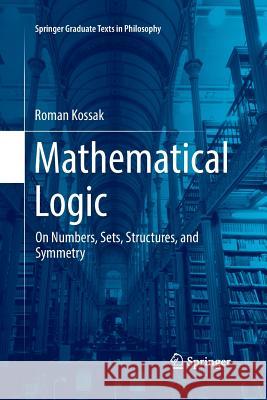Mathematical Logic: On Numbers, Sets, Structures, and Symmetry » książka
topmenu
Mathematical Logic: On Numbers, Sets, Structures, and Symmetry
ISBN-13: 9783030073312 / Angielski / Miękka / 2019 / 186 str.
Kategorie BISAC:
Wydawca:
Springer
Seria wydawnicza:
Język:
Angielski
ISBN-13:
9783030073312
Rok wydania:
2019
Wydanie:
Softcover Repri
Numer serii:
000780736
Ilość stron:
186
Waga:
0.29 kg
Wymiary:
23.39 x 15.6 x 1.09
Oprawa:
Miękka
Wolumenów:
01
Dodatkowe informacje:
Wydanie ilustrowane











